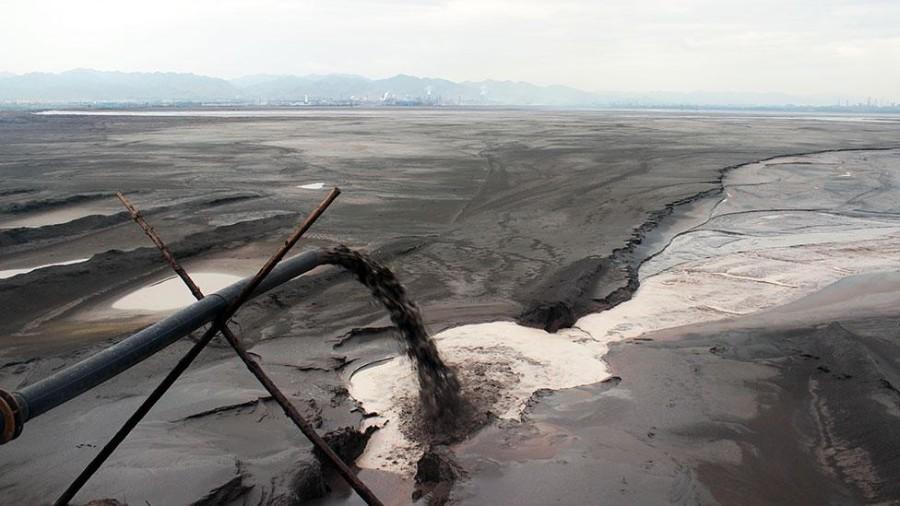Baotou: The toxicity of Mongolia
You may not have heard of Baotou, Mongolia, but it has probably heard of you. You, and most other consumers to ever own an iPhone, watch, or laptop. This is a city whose mine contains an estimated 70% of the world’s reserves of rare earth metals. You’ve seen them on your periodic table—the 17 elements isolated at the bottom.
Rare earth metals have many uses, according to Namibia Rare Earths, a corporation focused on accelerating the production of rare earth metals in Namibia. For example, a normal hybrid vehicle (one that uses more than one energy source) carries around one kilogram of rare earth metals. Holmium is used to color glass and make magnets; cerium in catalytic converters; the good samarium in the treatment of cancer.
Despite their name, however, rare earth metals are not rare at all. Although China produces 90% of the world’s rare metals, only 30% of the world’s deposits are actually located there. Why doesn’t the rest of the world mine their own rare earth metals, you ask? The environmental ramifications are heavy. As Tim Maughan from BBC writes, “It could be argued that China’s dominance of the rare earth market is less about geology and far more about the country’s willingness to take an environmental hit that other nations shy away from.”
This toxic willingness is clearly demonstrated by the Baotou lake. It’s surrounded by barren countryside, and pipes endlessly pour toxic waste into it. If you look at it on Google Maps, the dam where water would usually be represented by the color white is now intermixed with murky blacks and greys caused by coal dust. This is because of the toxic process needed to make the metals into usable products. For example, cerium is made by crushing minerals and mixing them with sulphuric and nitric acid. As you can imagine, this produces an exorbitant amount of poisonous waste as a byproduct.
This isn’t the only problem with the mining of rare earth metals in China. In 2012, the news agency Xinhua reported that the number one rare earth producer was stopping production for a while to stabilize prices. When Tim Maughan and a team from Unknown Fields went to visit a cerium processing plant, they found it completely empty. In Maughan’s own words, “There [was] no activity at all. Apart from our voices, which echo through the huge sheds, the plant [was] silent. It [was] obviously not operating.” When they pressed the issue with their guide, they were told it was closed for maintenance. Upon further insistence, the guide got suspicious, clammed up completely, and the tour was over. The same scenario occurred at a neodymium plant: “When our questions stray[ed] too far from applications and to production and associated environmental costs, the answers [were] less forthcoming, and … the visit [was] over.”
The problem with criticizing the mining is that rare earth metals have a diversity of applications. Just look at this list. Not only are they used in cars, phones, watches and more, but also are used for renewable energy. They’re used to power wind turbines and as catalysts to make biofuels. They’re in medical applications like X-rays and cancer treatments. In short, we cannot live without them.
But does that mean we allow countries like China, a developing country with CO2 emission problems that make futuristic horrors like buying fresh bottles of air a reality, to continue hurting its environment? The man who sells these bottles, Chen Guangbiao, sells them, of course, as more of a sarcastic wake up call than fresh-air-for-profit. But his words to the government are very important, and reflect the opinions of those living in Beijing, where pollution levels rose to a record high in 2013. He says, “Don’t chase the biggest profits at the expense of our children and grandchildren and at the cost of sacrificing our ecological environment.”
Sadly, there isn’t a black-and-white answer, as much as Guangbiao and others (including myself) would like it to be. Before the 1950s, the population in Baotou was around 97,000. Today? 1.67 million. The livelihood of almost two million people that live around Baotou relies on the mining of rare earth metals.
This is a problem that really doesn’t have a ready solution. No one can claim to have an answer that doesn’t jeopardise the lives of two million people, or their careers.
Sources: bbc.com, dailymail.co.uk

This is Anoushka’s second and final year in The Talon. She still does not know how to write a biography and would probably ‘google’ it if she knew...












chris • Feb 21, 2018 at 12:48 pm
Baotou is not in Mongolia, it is in Inner Mongolia. There is a difference.